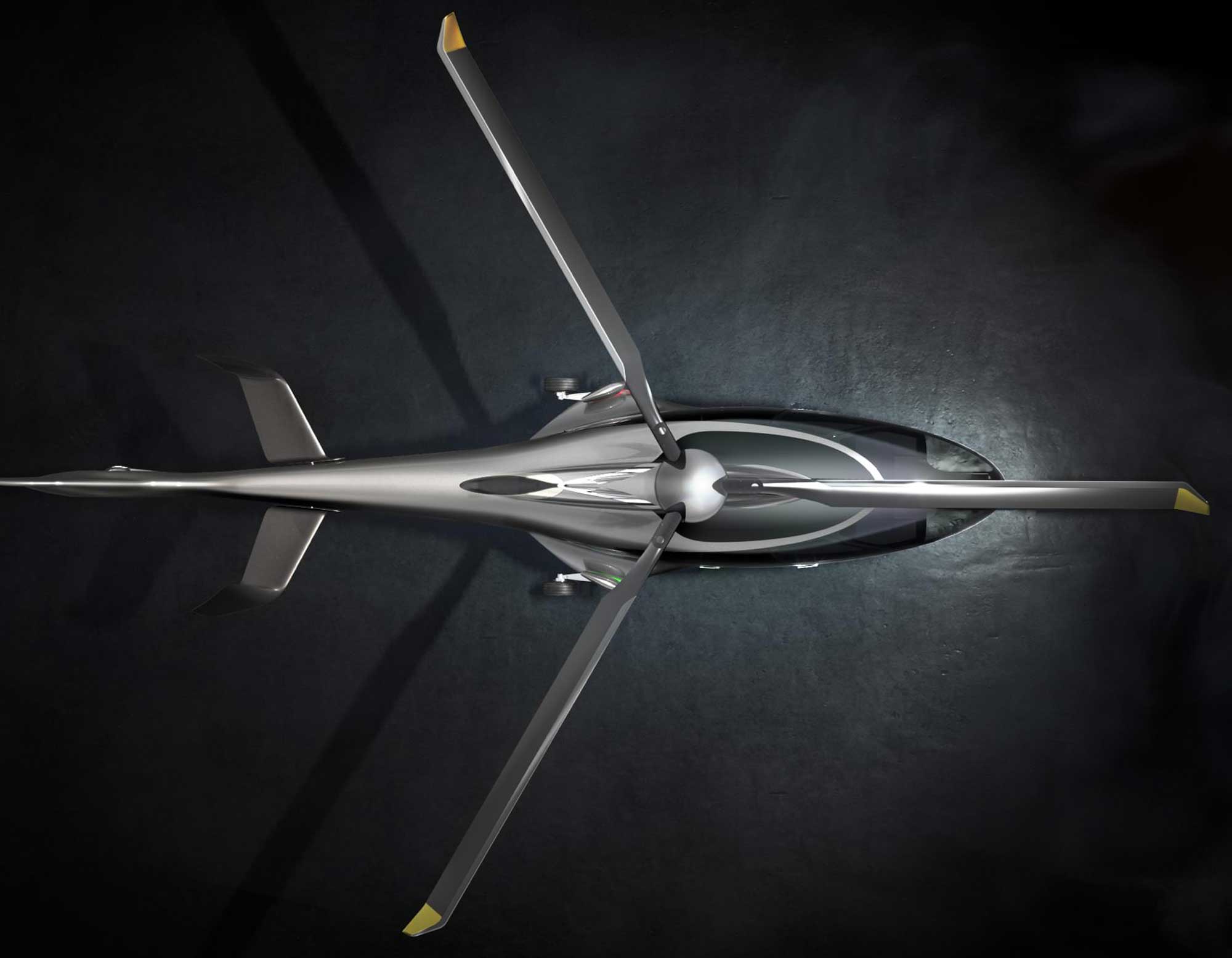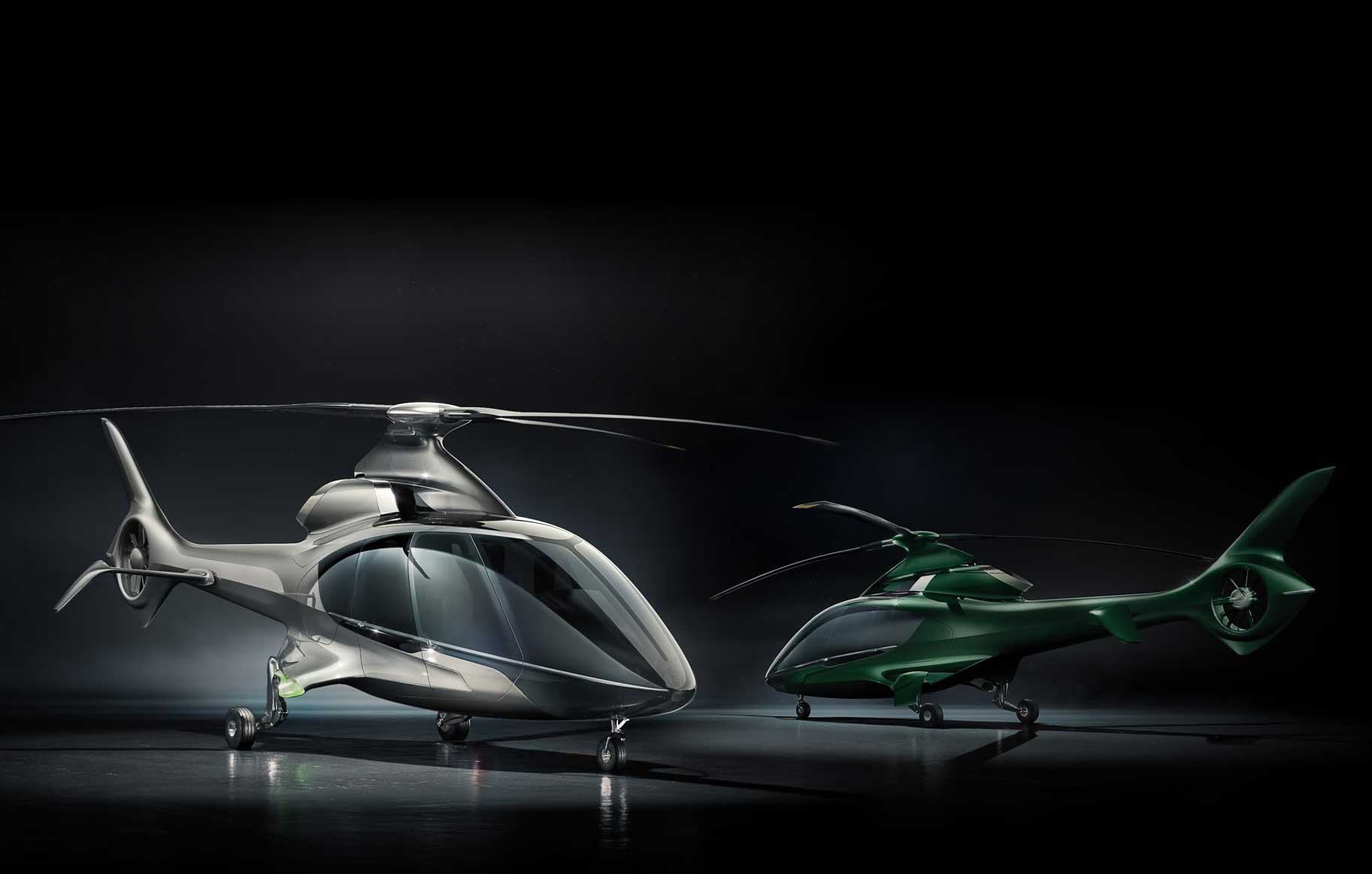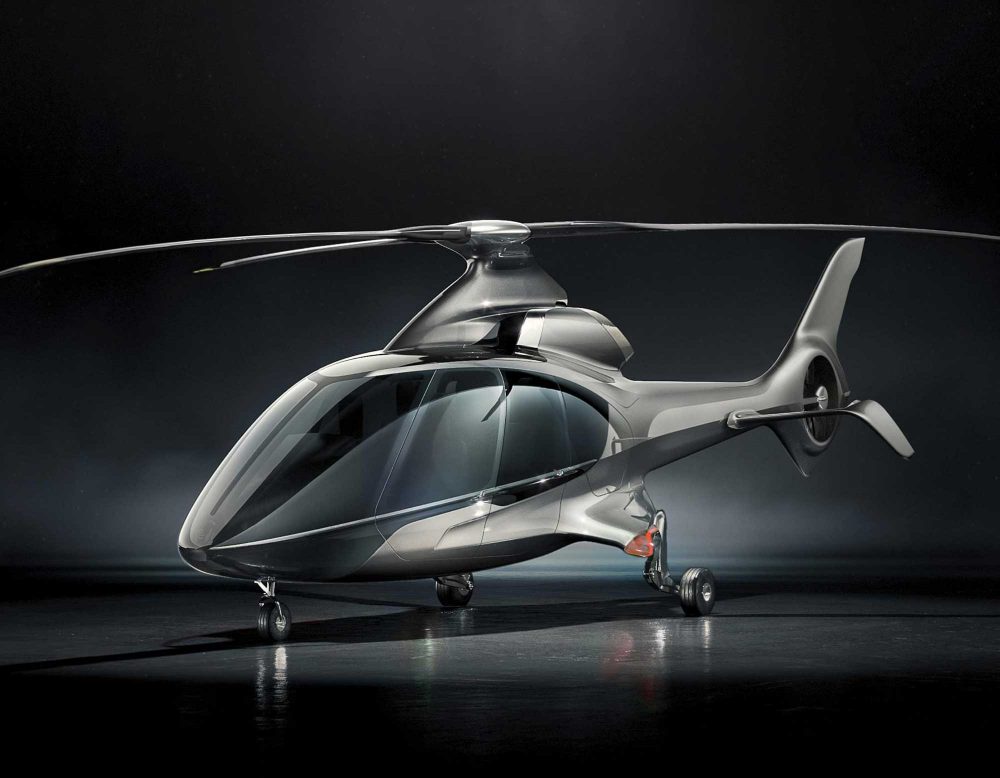A British company has unveiled a design for a brand new helicopter, the HX50 from Hill Helicopters.
The HX50 helicopter will have a composite structure for light weight, five seats and be lowered by a 500shp turbine.
It has been designed by aeronautics engineer Dr. Jason Hill, whose company, Dynamiq Engineering, has received a £1.4m govt grant from Innovate UK to develop the aircraft.
“The helicopter industry has long awaited an Elon Musk-style disruption that redefines the modern helicopter. The wait is over,” said Hill, founder and CEO of Hill Helicopters.
“The only way to create something that is truly groundbreaking is to design from the ground up, giving equal focus to aerospace design, performance, and safety as well as to the artistic and experiential aspects — including comfort, ergonomics, intuitive technology, and luxury. The HX50 brings all of this together to deliver a truly unique aircraft and experience.”

Hill Helicopters design for the HX50. Images: Hill Helciopters
The HX50 is currently in the advanced design phase, says Hill, with three prototypes scheduled to begin flight testing in 2022. The first deliveries are anticipated to take place in 2023, continues Hill. It will be built at a manufacturing base in Cornwall.
The application for the Innovate UK grant said, “During this ambitious and innovative project, our consortium will develop a next-generation private helicopter that delivers reduced environmental impact, lower noise levels and unprecedented levels of safety, comfort and performance at a game-changing price point.
“The project will result in a helicopter that will appeal to a new global market — private owners that are looking for a practical, luxurious, affordable and well specified 5-seat helicopter with low running costs (£15k per year).”
Hill Helicopters

Hill Helicopters HX50 spec:
Gross weight: 3,630 lb (1,650kg)
Empty weight: 1,870 lb (850kg)
Payload: 1,760 lb (800kg)
Cargo: 60 lb (27kg)
Fuel: 700 lb (317kg)
Length: 32ft (9.8m)
Width: 5ft (1.6 m)
Max power: 500shp
T/O power: 440hp
Continuous power: 400hp
Max cruise speed: 140kt (at max gross weight up to 10,000ft)
Fuel burn: 35 gph at 140kt; 22gph at 110 kt
Capacity: five people, including pilot















4 comments
This press release is everywhere, however, I don’t find the project credible – at least not on the timescales claimed. Why are there only “artist’s impressions” at this late stage? There are no details of the engineering team, no announcement of an engine partner; no details of development funds (other than £1.4m from the UK Govt), no prototypes to see, no models, real or virtual – you’d expect all of this if manufacturing were to commence in 2023? The last clean-sheet 5-seat turbine single from a start-up was the SKY-e (now SH-09). That was well-funded, supported by the engine manufacturer (Honeywell), had a large engineering team and after 18 years and three flying prototypes, ran out of money and still is not certified. By 2018 it had spent CHF420m and was seeking CHF150m to carry the design through certification. However, everything about this aircraft IS credible and having garnered $119m in orders, it was picked up by Leonardo for $185m this year. Will be ever see a new British rotorcraft? I hope so, but to have any confidence, we need to see something far more tangible than this press release!
Just been rejected for an innovate grant for a simple shield to prevent doctors, nurses etc., from dying of any viruses and airborne diseases. It has been trialled drawn up and ready to go, £50,000 was what I applied for….obviously not a vanity project.
Looks fab, and if it were true I’d be buying one – but per the previous comment, it just sounds like a complete pipe dream, sadly. Would love to be proved wrong but the timings are plainly fanciful and the money required is absolutely enormous!
Perhaps Rich Energy are backing it… 🙂
its strange!! the director of Hill Helicopters is a recorded medical surgeon & yet we see & read he’s a qualified aeronautics engineer, the company Dynamiq Engineering is an engineering analysis company?
& yet in 2020 hill helicopters was registered with £100 to its name… what’s happened to the £1.4M
we also see absolutely no partners, or further financial backers.. in promotional information it claims to be creating such product in-house “even though they seem to have no production facilities, machines, nor staff”
I’d really like to see how anyone could create such design concept on a £1.4M grant, claiming to use carbon composite for its body/crash structure & have a virtual cockpit ie “pretty high-tech!” along with a self designed jet engine & so-on